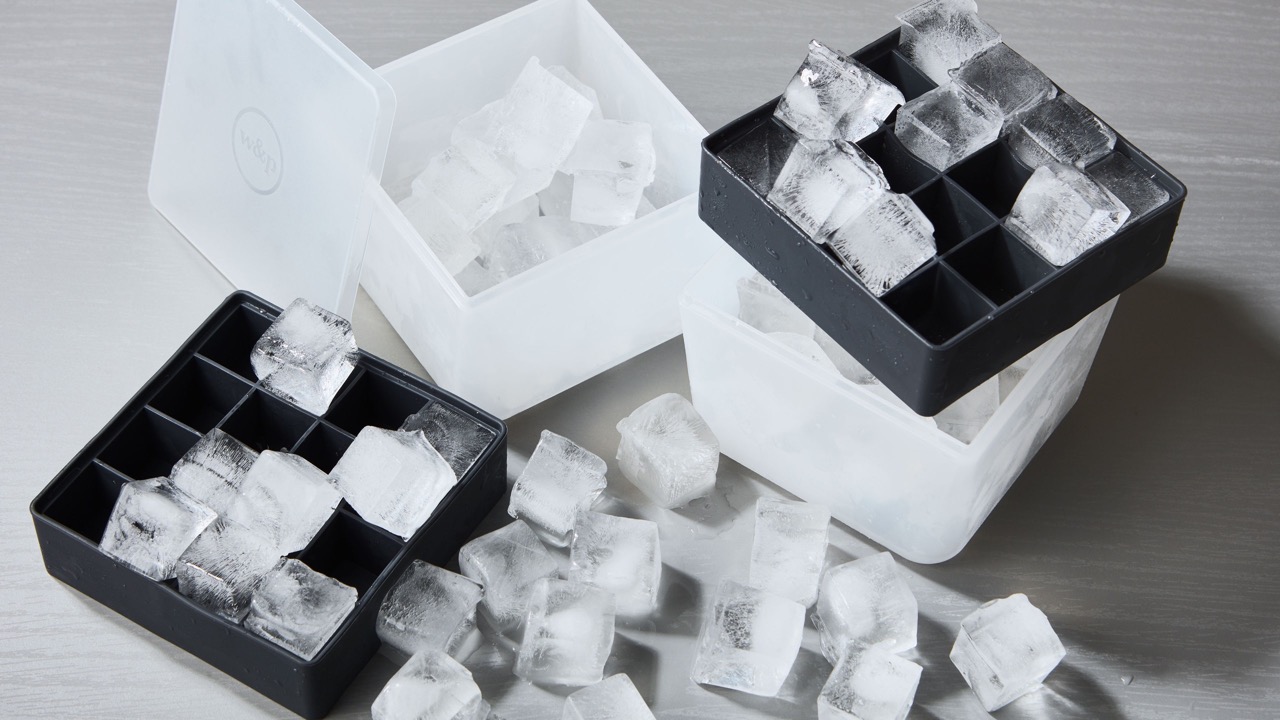

Articles
How To Store Dry Ice At Home
Modified: October 20, 2024
Learn how to store dry ice safely at home with our informative articles. Find tips and guidelines for storing dry ice to keep it fresh and effective.
(Many of the links in this article redirect to a specific reviewed product. Your purchase of these products through affiliate links helps to generate commission for Storables.com, at no extra cost. Learn more)
Introduction
Dry ice is a fascinating substance that has a variety of uses, from creating visual effects in movies to keeping perishable goods frozen during transportation. It is the solid form of carbon dioxide and is extremely cold, reaching temperatures of -78.5 degrees Celsius (-109.3 degrees Fahrenheit). Because of its unique properties, it requires special storage considerations to ensure safety and effectiveness.
In this article, we will explore the proper methods of storing dry ice at home. We will discuss important safety precautions to follow, suitable storage containers, ventilation requirements, and proper handling techniques. Whether you need to store dry ice for a short period or for an extended duration, we’ve got you covered.
Understanding the characteristics of dry ice is essential before diving into storage methods. Dry ice is not like your typical ice cubes made from water. It does not melt; instead, it undergoes sublimation, transforming from a solid directly into gas. This sublimation process produces a cloud of carbon dioxide gas, which can displace oxygen in poorly ventilated areas.
Now, let’s dive into the details of storing dry ice at home, ensuring safety and longevity while keeping this fascinating substance within our reach.
Key Takeaways:
- Safely store dry ice at home by understanding its unique properties, following essential safety precautions, choosing suitable storage containers, and prioritizing proper ventilation to prevent gas buildup and ensure longevity.
- Whether using a freezer, cooler, or styrofoam box, follow specific guidelines for each method to store dry ice effectively, ensuring proper insulation, ventilation, and regular monitoring for optimal results.
Read more: How To Store Dry Ice Overnight
Understanding Dry Ice
Dry ice, also known as solid carbon dioxide (CO2), is a substance that remains solid at extremely low temperatures. It is commonly used for a variety of purposes, including transportation of perishable goods, cleaning, scientific experiments, and creating special effects in the entertainment industry.
One of the most important characteristics of dry ice is its temperature. It is extremely cold, reaching temperatures as low as -78.5 degrees Celsius (-109.3 degrees Fahrenheit). This extreme coldness is what makes dry ice an effective refrigerant and allows it to keep items frozen for extended periods.
In its solid form, dry ice does not melt into a liquid like traditional ice. Instead, it undergoes a process called sublimation. Sublimation is when a solid transitions directly into a gas without going through a liquid phase. When dry ice is exposed to room temperature or higher, it sublimates and turns into carbon dioxide gas.
Sublimation produces a unique effect: the eerie fog-like cloud that we often associate with dry ice. This fog is actually a result of the carbon dioxide gas rapidly cooling the surrounding air and interacting with the moisture in the atmosphere. The cloud dissipates, but the gas itself is harmless and non-toxic in small concentrations.
It’s important to note that dry ice should be handled with care. Direct contact with the skin can cause frostbite due to its extremely low temperature. It is recommended to use gloves or insulated tools when handling dry ice to avoid any injuries.
Now that we have a basic understanding of what dry ice is and how it behaves, let’s move on to the crucial safety precautions that need to be followed when storing dry ice at home.
Safety Precautions
While dry ice may seem fascinating and useful, it also requires careful handling and storage to ensure the safety of everyone involved. Here are some essential safety precautions to keep in mind:
- Always wear protective gloves: Dry ice is extremely cold and can cause frostbite if it comes into direct contact with the skin. Make sure to wear thick, insulated gloves when handling dry ice to protect your hands.
- Handle dry ice in a well-ventilated area: When dry ice sublimates, it produces carbon dioxide gas. This gas can displace oxygen if not properly ventilated, leading to potential asphyxiation. Ensure that you are in a well-ventilated space or have proper ventilation in the storage area.
- Do not seal dry ice in an airtight container: The sublimation of dry ice creates pressure as the carbon dioxide gas expands. Sealing dry ice in an airtight container can cause the container to explode due to the buildup of pressure. Always use containers with vented lids or allow for some airflow.
- Do not store dry ice in a closed vehicle: Similar to sealing dry ice in a container, storing dry ice in a closed vehicle can lead to pressure buildup and potential explosion. Make sure there is proper ventilation and avoid prolonged exposure to the gas in an enclosed space.
- Keep dry ice away from children and pets: Dry ice can be dangerous if mishandled. Keep it out of reach of children and pets to prevent accidental ingestion or injury.
- Store dry ice in a well-insulated container: To prevent the rapid sublimation of dry ice, use a well-insulated container such as a cooler or styrofoam box. This will help maintain its subzero temperature and extend its shelf life.
By following these safety precautions, you can ensure the safe handling and storage of dry ice at home. Next, let’s move on to discussing suitable storage containers for dry ice.
Storage Container
Choosing the right container for storing dry ice is crucial to maintain its subzero temperature and prevent rapid sublimation. Here are some considerations when selecting a storage container:
- Insulation: Look for a container that offers proper insulation to slow down the sublimation process. Insulated containers, such as coolers or styrofoam boxes, are excellent choices as they help preserve the cold temperature of the dry ice for a longer period.
- Venting: It is important to choose a container that has a vented lid or permeable material. This allows the carbon dioxide gas produced during sublimation to escape, preventing pressure buildup and potential container damage.
- Size: Consider the amount of dry ice you plan to store and choose a container that can accommodate it. Make sure there is enough room for the dry ice and any additional packaging materials, if necessary.
- Durability: Opt for a sturdy and durable container that can withstand the cold temperature of the dry ice without cracking or breaking. It should be able to maintain its shape and integrity during storage.
- Tight-sealing lid: While the container should have a vented lid, it should also provide a tight seal when closed, minimizing air exposure and allowing the sublimation process to proceed at a controlled rate. This helps to maintain the integrity of the dry ice for an extended period.
When considering which container to use, keep in mind that the effectiveness of the storage will also depend on the ambient temperature and duration of storage. For short-term storage, a well-insulated cooler or styrofoam box will suffice. If you require long-term storage, you may need to invest in specialized dry ice storage containers that are designed to maintain the optimal conditions for dry ice.
Remember to always handle the container with gloves or insulated tools, and avoid direct contact with the dry ice to prevent frostbite. Now that you know how to select an appropriate container, let’s move on to discussing the importance of proper ventilation when storing dry ice.
Ventilation
Proper ventilation is crucial when storing dry ice to ensure the safe release of carbon dioxide gas produced during sublimation. Here are some key points to keep in mind regarding ventilation:
- Well-ventilated area: Store dry ice in a well-ventilated area to allow the carbon dioxide gas to disperse. This can be achieved by choosing a storage location with good air circulation, such as a garage or outdoor space.
- Avoid confined spaces: Do not store dry ice in a confined space, such as a sealed room or cupboard, as this can lead to the accumulation of carbon dioxide gas. Lack of proper ventilation in confined spaces can be hazardous and potentially lead to asphyxiation.
- Do not store in airtight containers: As mentioned earlier, it is important to avoid sealing dry ice in airtight containers. Vented containers or containers with permeable materials allow for the release of carbon dioxide gas, preventing pressure buildup.
- Keep ventilation ducts open: If storing dry ice indoors, ensure that ventilation ducts, windows, or doors are open to allow for the dispersion of gas. This helps to maintain a safe environment and prevent the buildup of carbon dioxide.
- Avoid low-lying areas: Carbon dioxide gas is heavier than air and can accumulate at lower levels. It is advisable to store dry ice in elevated areas to minimize the risk of gas concentration near the ground.
By prioritizing proper ventilation when storing dry ice, you can prevent the buildup of carbon dioxide gas and ensure a safe storage environment. Remember to always prioritize safety and follow the guidelines outlined in this article.
Next, let’s move on to discussing how to safely handle dry ice before storing it.
Read more: How To Store Dry Ice Long Term
Handling Dry Ice
Handling dry ice requires caution and adherence to safety guidelines to prevent injuries. Here are some important tips to keep in mind when handling dry ice:
- Use insulated gloves: When handling dry ice, always wear insulated gloves to protect your skin from frostbite. Dry ice can cause severe burns if it comes into direct contact with your skin.
- Avoid bare skin contact: Never touch dry ice with bare hands. Use tongs or other insulated tools to handle the dry ice safely. It’s essential to create a barrier between your skin and the extremely cold temperature of the dry ice.
- Do not place dry ice in your mouth or ingest it: Dry ice should never be consumed as it can cause severe internal injuries or frostbite to the mouth, throat, and digestive tract.
- Transport in a well-ventilated container: If you need to transport dry ice, place it in a well-ventilated container. Avoid sealing the container tightly to allow for the release of carbon dioxide gas produced during sublimation.
- Do not store in a non-ventilated area: It is important to store dry ice in a well-ventilated area to prevent the buildup of carbon dioxide gas. This helps maintain a safe environment and prevents the risk of asphyxiation.
- Do not leave dry ice unattended: Always supervise dry ice when storing or transporting it. Ensure that it is stored in a safe location away from children and pets.
By following these guidelines, you can handle dry ice safely and avoid any potential injuries or accidents. Keep in mind that dry ice is a unique substance that requires cautious handling due to its extreme cold temperature and the release of carbon dioxide gas during sublimation.
Now that we’ve covered the essential aspects of handling dry ice safely, let’s move on to discussing different methods of storing dry ice at home.
Store dry ice in a well-insulated cooler with a lid to prevent it from sublimating too quickly. Place a towel or cardboard on top to provide extra insulation. Keep the cooler in a well-ventilated area, as dry ice releases carbon dioxide gas as it sublimates.
Storing Dry Ice in the Freezer
If you need to store dry ice for a short period, using a regular freezer is a viable option. However, it’s important to follow some specific guidelines to ensure safe storage and prevent any damage to your freezer:
- Choose a well-ventilated freezer: Ensure that the freezer you plan to use has good air circulation to allow for the release of carbon dioxide gas. This will prevent the buildup of gas and maintain a safe storage environment.
- Use insulated gloves: Before handling dry ice, put on insulated gloves to protect your skin from frostbite. Dry ice is extremely cold and can cause severe burns if touched with bare hands.
- Wrap the dry ice: Wrap the dry ice in several layers of newspaper or place it in a sealed plastic bag to prevent direct contact with the freezer shelves or walls. This helps protect the freezer from possible damage caused by its extreme temperature.
- Keep the freezer door slightly open: Do not fully close the freezer door when storing dry ice. Leaving a small gap allows for proper ventilation and helps prevent pressure buildup due to carbon dioxide gas released during sublimation.
- Regularly check the dry ice: Monitor the dry ice regularly to ensure it is not sublimating too quickly. If you notice excessive sublimation, it may indicate a lack of insulation or ventilation. Make any necessary adjustments to maintain optimal storage conditions.
- Store in a dedicated area: If possible, designate a specific section or area within the freezer for storing dry ice. This helps to reduce any potential interference with other items in the freezer and ensures easy accessibility.
Keep in mind that storing dry ice in a regular freezer is suitable for short-term storage only. Dry ice tends to sublimate relatively quickly in regular freezer temperatures. Therefore, if you need to store dry ice for an extended duration, it is best to consider alternative methods such as using a dedicated dry ice storage container or a well-insulated cooler.
Now that you know how to store dry ice in a freezer, let’s explore another method using a cooler.
Storing Dry Ice in a Cooler
A cooler is a popular and effective method for storing dry ice, whether you’re going on a camping trip or need to keep perishable items frozen during transportation. Here are the steps to safely store dry ice in a cooler:
- Choose an appropriate cooler: Select a high-quality cooler that is well-insulated and can maintain a low temperature for an extended period. Look for a cooler made with thick walls and a tight-sealing lid to minimize air exchange.
- Pre-chill the cooler: Before placing the dry ice in the cooler, it is a good practice to pre-chill the cooler by adding some ice or ice packs. This helps create a cold environment and maximizes the effectiveness of storing the dry ice. Ensure that any loose ice or liquid is removed before adding the dry ice.
- Wrap the dry ice: Wrap the dry ice in several layers of newspaper or place it in a sealed plastic bag to provide additional insulation. This prevents direct contact between the dry ice and the items you want to keep frozen.
- Place the dry ice in the cooler: Carefully place the wrapped dry ice in the bottom of the cooler. Make sure it is positioned away from any perishable items to avoid direct contact.
- Add a layer of insulation: Place a layer of insulation, such as cardboard or a towel, over the dry ice to further separate it from the items you’re storing. This helps regulate the temperature and prevents the transfer of extreme cold to your perishable goods.
- Arrange the items to be frozen: Arrange the perishable items on top of the insulation layer in the cooler. Ensure there is enough space for air circulation and try to minimize any empty gaps to maintain the cold temperature.
- Secure the cooler lid: Close the cooler lid tightly to minimize air exchange. However, do not seal it completely to allow for the release of carbon dioxide gas produced during sublimation.
- Monitor and replenish as needed: Check the dry ice regularly and replenish it as necessary. Dry ice typically lasts about 24 to 48 hours, so be prepared to replace it if needed to maintain the desired temperature in the cooler.
Remember to always handle dry ice with insulated gloves and follow proper safety precautions outlined in earlier sections. Storing dry ice in a cooler provides a convenient and portable solution to keep items frozen and provides insulation to extend the longevity of the dry ice.
Now, let’s explore another method of storing dry ice using a styrofoam box.
Storing Dry Ice in a Styrofoam Box
A styrofoam box is an excellent choice for storing dry ice due to its excellent insulation properties. It helps maintain the subzero temperature of the dry ice and prolong its longevity. Here’s how to store dry ice in a styrofoam box:
- Select a suitable styrofoam box: Choose a styrofoam box that is sturdy and well-insulated. Opt for a box with a tight-fitting lid to minimize air exchange and maintain the temperature inside.
- Pre-chill the styrofoam box: Before placing the dry ice in the styrofoam box, pre-chill it by adding some ice or ice packs. This helps create a cold environment inside the box and enhances the effectiveness of the dry ice storage.
- Wrap the dry ice: Wrap the dry ice in several layers of newspaper or place it in a sealed plastic bag. This additional layer of insulation protects the styrofoam box from direct contact with the extremely cold dry ice.
- Place the dry ice in the styrofoam box: Carefully place the wrapped dry ice in the bottom of the styrofoam box. Position it away from the sides of the box to ensure proper insulation and prevent direct contact with the items you are storing.
- Add a layer of insulation: Place a layer of insulation, such as cardboard or a towel, on top of the dry ice. This helps regulate the temperature inside the box and prevents the transfer of extreme cold to the items you want to keep frozen.
- Arrange the items to be frozen: Arrange the perishable items on top of the insulation layer, ensuring there is enough space for air circulation. Pack the items tightly to minimize empty gaps and maintain the cold temperature.
- Secure the styrofoam box lid: Place the lid on the styrofoam box and make sure it is tightly secured, minimizing air exchange. However, do not seal it completely to allow for the release of carbon dioxide gas produced during sublimation.
- Monitor and replenish as needed: Regularly check the dry ice and replenish it as required to maintain the desired temperature inside the styrofoam box. Dry ice typically lasts up to 24 to 48 hours, so be prepared to replace it if necessary.
Remember to always handle dry ice with insulated gloves and follow proper safety precautions, as mentioned earlier. Storing dry ice in a styrofoam box provides excellent insulation, keeping the subzero temperature intact and extending the shelf life of the dry ice.
Now that you have learned different methods of storing dry ice, let’s move on to some tips for long-term storage to help you maximize its effectiveness.
Read more: How To Store Dried Lavender
Tips for Long-Term Storage
If you need to store dry ice for an extended period, whether for a specific project or long-distance transportation, here are some tips to maximize its effectiveness:
- Use a dedicated dry ice storage container: Consider investing in a specialized dry ice storage container. These containers are designed to maintain the subzero temperature of dry ice for an extended period, providing optimal insulation and ventilation.
- Minimize air exposure: Properly seal the storage container to minimize air exchange. The lesser the air exposure, the slower the sublimation process, leading to longer-lasting dry ice.
- Layer insulation: Create layers of insulation between the dry ice and any perishable items you are storing. This helps prevent direct contact and regulates the temperature for better preservation.
- Store in a cool location: Choose a cool and temperature-stable location for long-term storage. Avoid areas that are exposed to direct sunlight or high heat, as they can cause faster sublimation of the dry ice.
- Regularly replenish the dry ice: Check the dry ice periodically and replenish it as needed to maintain the desired temperature. This ensures that the stored items remain frozen and prevents any spoilage due to thawing.
- Monitor gas buildup: Keep an eye on the gas buildup inside the storage container. If there are any signs of pressure increasing, release some of the gas to maintain a safe environment.
- Follow manufacturer guidelines: If using a specialized dry ice storage container, follow the manufacturer’s instructions and guidelines for proper usage and maintenance. This ensures optimal performance and safety.
- Handle with care: Always handle dry ice with insulated gloves and be cautious during storage and transportation. Proper handling reduces the risk of injury and maintains the quality and longevity of the dry ice.
By implementing these tips, you can effectively store dry ice for an extended duration, ensuring the preservation of perishable items and maximizing the utility of the dry ice.
Remember to prioritize safety, ventilation, and proper insulation for optimum storage conditions. With these guidelines in mind, you can safely and effectively store dry ice at home or for your specific needs.
Now, let’s conclude this article with a summary of the key points discussed.
Conclusion
In conclusion, storing dry ice at home requires proper knowledge of its unique properties and adherence to safety guidelines. Dry ice, the solid form of carbon dioxide, is extremely cold and undergoes sublimation, transforming directly into gas. To ensure safe storage and maximize its effectiveness, here are the key points to keep in mind:
Firstly, it is essential to understand the characteristics of dry ice and the process of sublimation. Dry ice does not melt like traditional ice but transitions directly from solid to gas. This sublimation process produces carbon dioxide gas, which requires proper ventilation to prevent the buildup of gas and potential asphyxiation.
Safety precautions are of utmost importance when handling and storing dry ice. Always wear insulated gloves to protect your skin from frostbite, handle dry ice in well-ventilated areas, and avoid sealing it in airtight containers to prevent pressure buildup. Additionally, keep dry ice away from children and pets to avoid accidents.
Choosing the right storage container is crucial for maintaining the subzero temperature of dry ice. Insulated containers, such as coolers or styrofoam boxes, help slow down the sublimation process and extend the shelf life of dry ice. Proper ventilation is key, whether it’s leaving the freezer door slightly open, using a vented lid, or storing dry ice in well-ventilated areas.
When it comes to handling dry ice, always prioritize safety. Use insulated gloves, avoid direct skin contact, and never ingest dry ice. Transport dry ice in well-ventilated containers and store it in dedicated areas, away from heat sources and confined spaces.
Storing dry ice in different methods requires attention to detail. Whether it’s storing in a freezer, cooler, or styrofoam box, consider pre-chilling the storage container, wrapping the dry ice, adding insulation layers, and regularly monitoring and replenishing the dry ice to maintain optimal temperature conditions.
For long-term storage, a dedicated dry ice storage container is recommended, with careful attention to proper sealing, insulation, and gas buildup monitoring. Following manufacturer guidelines and handling dry ice with care are vital to ensure safety and maximize its effectiveness.
By following these guidelines and understanding the specific requirements for storing dry ice, you can safely preserve perishable items, transport goods at a frozen state, and utilize dry ice for various purposes at home.
Remember, always prioritize safety and ventilation, and handle dry ice with care. With these considerations in mind, you can confidently store dry ice and make the most of its unique properties.
Frequently Asked Questions about How To Store Dry Ice At Home
Was this page helpful?
At Storables.com, we guarantee accurate and reliable information. Our content, validated by Expert Board Contributors, is crafted following stringent Editorial Policies. We're committed to providing you with well-researched, expert-backed insights for all your informational needs.














0 thoughts on “How To Store Dry Ice At Home”